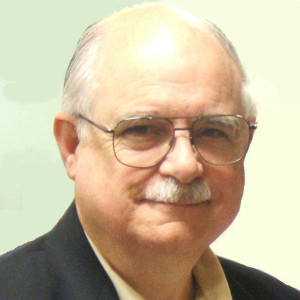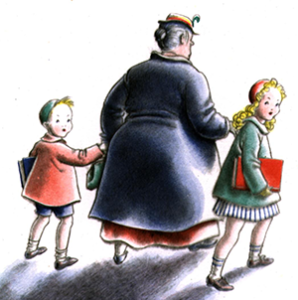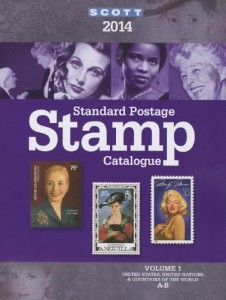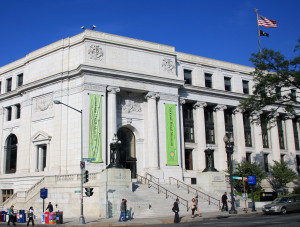So, You Think Being A Dealer Would Be Easy?
by John M. Hotchner
(This is written in first person for effect, though I have only worked for a dealer.)
 If I were to calculate the value of my time spent cataloging and looking up references in order to price my material fairly and to sell, my return per hours spent would be minimal.
If I were to calculate the value of my time spent cataloging and looking up references in order to price my material fairly and to sell, my return per hours spent would be minimal.- And that’s before I spend additional time calculating offers on material collectors and dealers are selling. And the time spent keeping up with philatelic news and trends by means of reading philatelic periodicals and other literature.
- For every item I sell, I must buy something on which I can make a reasonable profit in the future. Since only half or less of what I buy will sell again within a year, I actually need to buy more, knowing that I may have to discount some of it eventually to clear it out.
- Every transaction has to be recorded for the benefit of the tax man — federal, state and local. And it has to be recorded in a consistent and usable format. I wish I’d paid better attention in my “business math” course in high school. College calculus doesn’t help much.
 I am expected to be an expert on all things philatelic by my customers: to be able to spot fakes at 500 paces, to answer even the most elemental questions as well as the tough ones patiently and in depth, and to be able to predict what will gain or lose value on the long term. The good news is that philately is a continuing education. One cannot help but learn new things.
I am expected to be an expert on all things philatelic by my customers: to be able to spot fakes at 500 paces, to answer even the most elemental questions as well as the tough ones patiently and in depth, and to be able to predict what will gain or lose value on the long term. The good news is that philately is a continuing education. One cannot help but learn new things.- Increasingly, I need to be a technical wizard to reach my potential customers “where they are” on the Internet, Twitter, texting, etc. None of this comes for free — either in terms of time or money. This is a good thing as I can now speak my children’s language, though I could use more of their technical savvy.
- And I must balance those methods of outreach with more traditional direct and in-person outreach such as print advertising, taking a table at stamp shows, getting involved as an active member of a local club, and even contributing articles on my business or my specialties to the philatelic press.
- I must — often a pleasurable experience, but just as often not — to shows, to evaluate prospective purchases, to meet clients. And once I make a commitment to be there, neither rain nor snow nor hurricane is an adequate excuse for not showing up as promised. Even illness doesn’t cut it unless I or one of my nearest and dearest is in extremis. And yes, I must keep track of all those expenses, including the extra hotel nights when weather cancels planes or closes highways.
- Connected to #8, I have to explain to my significant other and family members why their spur-of-the-moment or short-term plans for birthday parties, school events, weddings, births, and even deaths conflict with my commitments made sometimes two or three years into the future. Against this problem is the fact that mostly when I am home, my time is my own. I’m not punching a clock.
- I must maintain a home office — or even more significant, a business address — where I do my work, run my business, communicate with my customers, and store my stock. While a tax-deductible set of expenses (again that accounting!), those costs have to be figured into the pricing of my material,
- They know me at the post office, where the increasingly intricate rules for mailing flats and using controlled mail mean I must stand in line just about every day. Oh, yes, and there are the constantly increasing rates, too.
- I must maintain a significant philatelic library covering the areas in which I am active, including “investing” in the most current catalogues and specialty society literature, as well as the standard references from the past.
- I need to be master of the watermark tray, the perforation gauge, color charts, and cancellation measurement devices — even a small mistake can cost me a bundle of bucks, or make me look like a complete idiot to my customers.
- My customers are not only my bread-and-butter; they are the reason I got into the business. I enjoy them and enjoy filling their wants. And yet, some few seem to go out of their way to be ill-humored, overly contentious on prices, and/or are so taken by their own importance that they treat me like a bug they can squash. I try to stay detached and not take it personally.
- Studying the souk in Damascus is a sport for me as I have had to integrate the lessons of human impulse, financial motivations, and the game of bargaining in how I negotiate with customers. Reaching a mutually agreed price — whether buying or selling — is a good deal more complicated than marking an item at $5 (or $500) and waiting for someone who wants it that badly to show up. Some dealers will not move on price. I don’t like to, but for good customers, or ones who buy a lot…
- I often need to find and employ knowledgeable and honest part-time help to keep my stock in order, to service customer orders, to help cover my booth at shows, but also to design my web interfaces, and to help with my accounting and tax chores. This brings a new level of complexity to my “sole proprietorship”.
- I must maintain good relations with other dealers in the community; not only because it is the right thing to do, but because we often help each other with knowledge, with references to available material, with mentoring, and in many other ways.
And yet despite the requirements and the obstacles, I love the hobby, the great majority of its practitioners, their lust for challenge and discovery, and simply handling stamps and covers. I enjoy seeing material I’ve sold being used in exhibits, in articles, and achieving new catalogue status. I enjoy the discoveries I make, and even the ones that others make in my stock. (After all, I got the price I needed when I sold the item.)
No occupation is without its hurdles, and despite mine, I enjoy most of the work, and it does put dinner on the table!
Should you wish to comment on this column, or have questions or ideas you would like to have explored in a future column, please write to John Hotchner, VSC Contribu-tor, P.O. Box 1125, Falls Church, VA 22041-0125, or email, putting “VSC” in the subject line.
Or comment right here.







